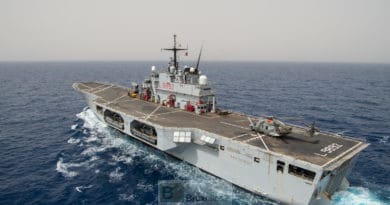An A400M for the EU. What if it wasn't just a fish...

(BRUSSELS2) April 1 ends. And it is obvious that this site could not fail in the tradition. Last year, Von Wogau, the MEP chairman of the Defense sub-committee, had brilliantly innovated in the section with his proposal to "shielded translation booths for Eufor Tchad". I hope I have been up to the task this year with this A400M for Ashton. Although... this fish might not be quite one. The need for transport aircraft is, indeed, very serious in the European level.
A real need
The crisis in Haiti, like the previous Tsunami, the evacuation of citizens from Georgia during the Russo-Georgian conflict of 2008, or the deployment operations in Chad or Georgia have shown all the benefits of all-terrain aerial transport means. However, military air transport is a capability gap still observed in Europe. The budget crisis will not fix that. A direct participation of the European Union in aerial equipment corresponds to a political necessity (to do what the States cannot do alone). In budgetary terms, this has a cost but not extraordinary (knowing that such an aircraft is amortized over a minimum of thirty years, this would cost crew and maintenance included, fuel not included at around 10 million euros / year) . And there are precedents, notably with ECHO flight the service of the European Humanitarian Aid Office which transports humanitarian workers to Africa (cost in 2008: approximately 8 million euros). In terms of communication, this "EU Air Force" would have an undeniable advantage: to have a very real symbolism of the EU's action in humanitarian matters, civil security in the world.
False Obstacles. Some may argue that budget line A or Article B of the Treaty prohibits this type of equipment. I don't really believe in that kind of argument. If there is political will, it is quite possible to find a solution. And in air matters, multiple formulas of leasing, sharing of capacity or costs (sharing) have been put in place which make it possible to find a solution. Moreover, this option of purchasing flight hours on existing aircraft (Hercules C130J in particular) has been studied within the EU military headquarters. Now is the time to take the plunge... Quite simply why the EU could not contribute to the EATC force (1) in Eindhoven, by taking time slots: a plane would always be reserved by the Member States participating in this force for the EU?
A little audacity and concrete projects
It is undeniable that minds are changing in the Member States, each feeling that with the current budgetary developments the national "every man for himself" has had its day... The time has come for the EU to regain a little mobilizing projects, quite simple and easy to understand for the general public and which promote synergies between Member States.
(credit: CE-ECHO/J.VanBrussel)
(1) Green light for European Air Command EATC. A small revolution
